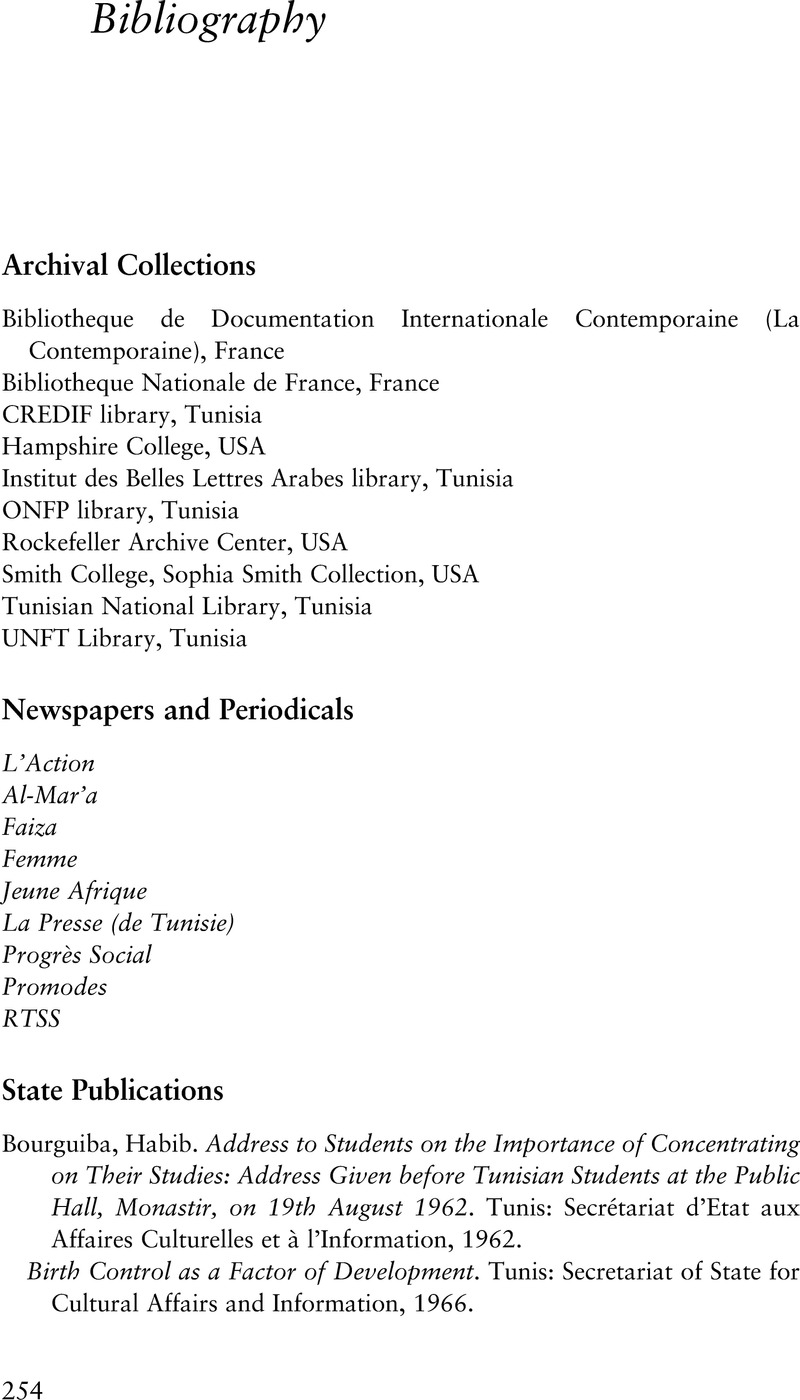Book contents
- Tunisia’s Modern Woman
- The Global Middle East
- Tunisia’s Modern Woman
- Copyright page
- Contents
- Figures
- Acknowledgments
- Note on the Text
- Introduction
- 1 Between State Feminism and Global Sisterhood
- 2 Family Planning as Development
- 3 Postcolonial Tunisian Academics
- 4 Fashion, Consumption, and Modern Gender Roles
- 5 Love and Sex
- Conclusion
- Bibliography
- Index
- References
Bibliography
Published online by Cambridge University Press: 20 May 2021
- Tunisia’s Modern Woman
- The Global Middle East
- Tunisia’s Modern Woman
- Copyright page
- Contents
- Figures
- Acknowledgments
- Note on the Text
- Introduction
- 1 Between State Feminism and Global Sisterhood
- 2 Family Planning as Development
- 3 Postcolonial Tunisian Academics
- 4 Fashion, Consumption, and Modern Gender Roles
- 5 Love and Sex
- Conclusion
- Bibliography
- Index
- References
Summary

- Type
- Chapter
- Information
- Tunisia's Modern WomanNation-Building and State Feminism in the Global 1960s, pp. 254 - 279Publisher: Cambridge University PressPrint publication year: 2021

